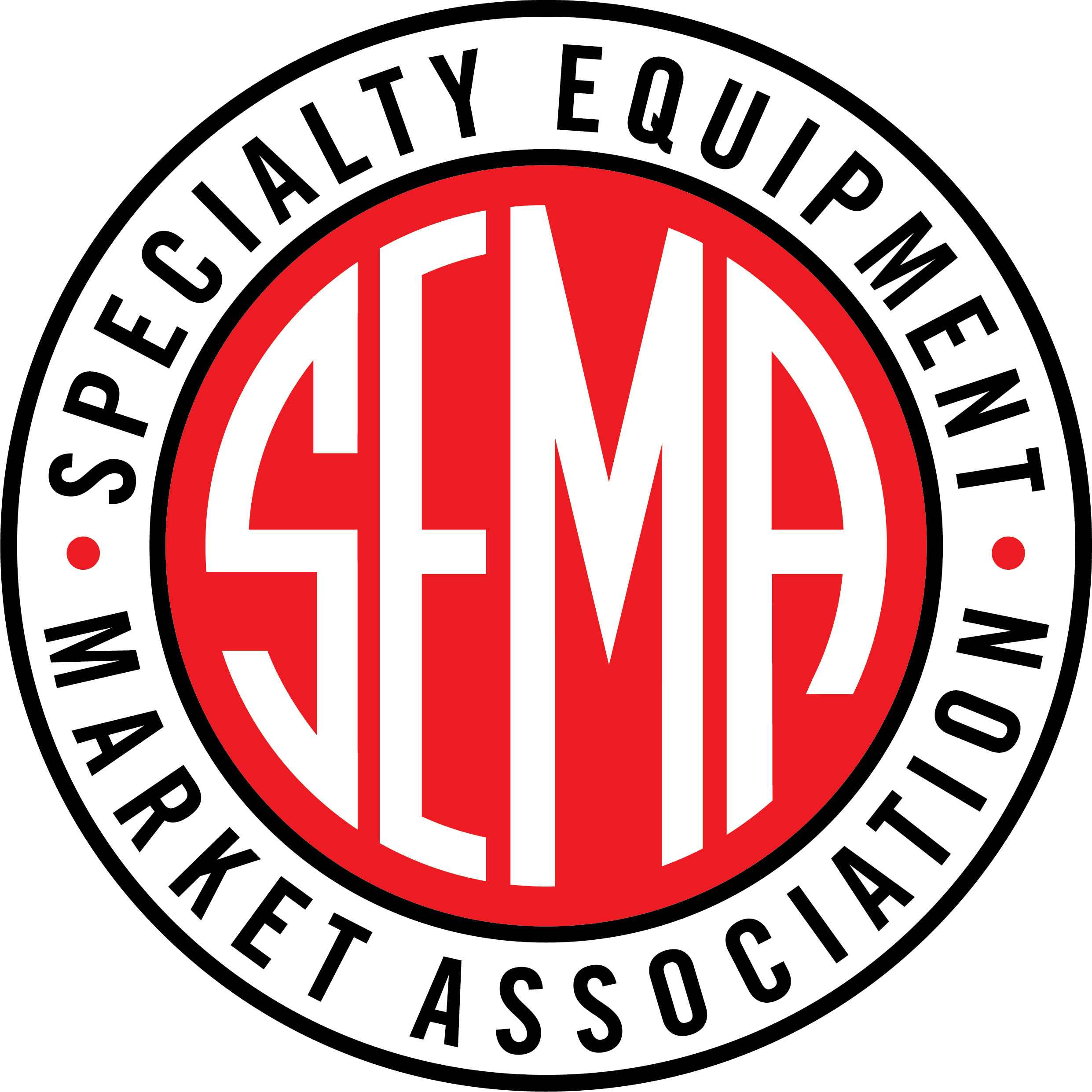SEMA News—October 2013
BEST PRACTICES
By Steve Campbell
Selecting a Public Relations Agency
Matching Companies With Marketing
| |
We included an article on best practices for selecting an ad agency in our February 2013 issue (“Finding the Right Advertising Agency,” p. 60), and this month, we’re taking a look at selecting a PR firm.
Traditional advertising agencies design, create and place ads for specific media—print, broadcast, billboards, web and elsewhere—to help sell specific goods or services, employing teams of art directors, writers and management personnel. Public relations, on the other hand, is designed to educate, inform, influence, provide solutions, create good will, enhance reputation, elicit feedback and support both the client company and the community, according to Tracy L. Teuscher, APR, president of The Buzz Maker! LLC.
“Public relations may include consumer, media, community, member and employee relations as well as marketing communications, internal or crisis communications, to name a few,” she said. “True PR involves a good bit of problem solving. PR professionals will be able to advise you about their areas of specialty but if advertising or marketing will be integrated into the communication plan, the team may include other specialized professionals or a good referral. For example, advertising may be very helpful in selling a product, but when it comes to reputation management, PR is the best choice. What do you want people to know? What do you want them to do? Asking these two questions is a good place to start.”
 David Leach, president of Aftermarket Media Website: http://www.aftermarketmedia.com/ | |
Until fairly recently, advertising and PR were two distinctly different functions in the marketing of automotive specialty-equipment products. As with so many other aspects of modern commerce, the Internet has created some blurring of the lines.
“From the largest global conglomerates to the smallest boutique agencies, most firms have adapted a more blended approach to marketing,” said Dan Kahn, president of Kahn Media Inc. “As traditional media outlets shrink and online outlets offer more pay-to-play and advertorial content, agencies on both sides of the aisle have had to alter their business models to do what works best for each individual client. In most cases, this means handling everything from content creation for editorial and advertising to negotiating stories and ad buys.”
Public relations firms come in all shapes and sizes. Some employ cadres of creative folk who can handle anything from writing a compelling press release to shooting a high-concept video. They may cover the gamut of the industry, with clients in every facet, or they may be highly specialized agencies that concentrate on a single segment of a given marketplace. Dave Wolin, president of Dave Wolin Inc., is firmly in the latter camp. As a racer, his passion and expertise are in helping the racing industry, and his clients are almost all small businesses.
“The Internet has changed marketing,” Wolin said. “A small-town speed shop and race car supply store that’s always sold things locally and never needed an ad agency or PR firm can now market nationally with a website. E-commerce is relatively inexpensive and easy to do, so small companies can advertise using products, such as Google Ad Words, which is very highly targeted and focused. Many times these small businesses can’t get much done other than working every day, so not only do I take care of their advertising, e-commerce and so on, but I also sometimes can send somebody out to the racetrack to hand out their flyers. We do anything that’s necessary.”
 Dan Kahn, president of Kahn Media, Inc. Website: www.KahnMedia.com | |
“Each spoke represents a different communications channel, including print magazines, blogs, radio, podcasts, Facebook, Twitter, Instagram, YouTube and more,” Kahn said. “If all the channels carry coordinated messages and bring traffic back to the hub, you’re in business. So when you’re looking for an agency, make sure it is disciplined in all of those fields. A good agency essentially acts like your in-house marketing department, but with
economies of scale. You get all the benefits of a large marketing arm without the payroll and human-resources issues.”
The search for the right public-relations firm may best begin with a few conversations with other companies in the industry—businesses that you’ve worked with, people you respect, non-competitive organizations that seem to have a good grasp of marketing their products or services. You might also check out the listings in the SEMA Membership Directory. It’s available for download as a PDF or may be viewed in a searchable online form under the Membership tab on www.sema.org.
“Industry organizations, trade editors and industry leaders can be good sources of information,” explained Shari McCullough Arfons, president of McCullough Public Relations.
“Also, be sure to check the websites of agencies that serve the industry, where an initial evaluation can be made.”
 Donald Johnson, CEO of DJFMedia.com Website: http://djfmedia.com/ | |
“Meet with three or four different agencies, because it’s very important who you choose to help put your face on your product and develop your public imagery,” said Larry Weiner, president of Performance West Group. “Decide with them what their deliverables will be, and see what their agenda is and how they’re going to take care of your business. Also talk to some of their existing clients separately. Ask for a couple of referrals so that you can see if they are happy.”
McCullough Arfons said that an agency should be willing to provide several references as well as an extensive portfolio of work it has performed for other clients, but you should also conduct your own background research to determine whether the agency’s goals and culture fit your own.
“Like any commercial enterprise, agencies have individual brands,” she said. “That often can be sensed through the look and feel of the agency’s logo, its website and its overall style of communication.”
David Leach, president of Aftermarket Media, said that the search should begin by listing your wants, goals and expectations, including your budget.
“The clearer the client is regarding what they’re trying to achieve, the better,” he said. “Then compare the agencies’ pitches and costs with your needs. One good way to ‘test’ an agency is to start with a small but defined project. All parties can learn a lot about each other from a short, measurable task. Moreover, the client and the agency can get to know each other better before getting into a larger, longer-term project.”
 Larry Weiner, president of Performance West Group Website: http://www.performancewestgroup.com/ | |
“A good and ethical consultant will assist a company in outlining needs, goals, objectives, strategies, tactics and channels that will be best based upon the budget the company has outlined,” she said. “That includes understanding the differences between advertising, marketing and public relations and how to use each effectively.”
Kahn also advised looking at the agency’s background and its expertise in the automotive realm. The agency should understand not only the client’s product or service, but also its business model, its challenges and where its growth will come from.
“Most importantly, find out if they’re really car people,” he said. “Just as most of us wouldn’t want to feign interest in needlepoint because we’d be called out, you can’t fake being a car person, and the effectiveness of an agency hinges on its ability to understand and have a passion for the subject matter.”
 Shari McCullough Arfons, president of McCullough Public Relations Website: http://mcculloughpr.com/ | |
“Ask how many years the agency has been in business,” he suggested. “Ask for a list of clients the agency has represented so you can talk to them, and get into specifics about the types of programs you’re interested in. Every client is going to have different sets of needs.”
Even small businesses that don’t have funds for big-budget marketing schemes can benefit from working with a PR firm. The costs don’t have to be astronomical, and many firms will adjust their rates based on the growth potential of a client.
“A smaller company can sometimes work a deal with an agency where they can grow together,” said Donald Johnson, CEO of DJFMedia.com. “If the agency produces results, the client can work up a raise every fiscal quarter based on gross sales.”
The experts were virtually unanimous about the use of PR professionals by smaller companies. When a company is concentrating on day-to-day operations—raw materials, manufacturing, human resources, health-care costs—there simply isn’t time to also run a comprehensive marketing campaign.
“Some clients have used our services and then feel that they could take it from there, save some money,” Johnson said. “But smaller clients usually don’t have many contacts or marketing experience, so they return because they find that they really can’t get along without an agency.”
 Tracy L. Teuscher, APR, president of The Buzz Maker! LLC Website: http://www.thebuzzmaker.com/ | |
“Our most successful campaigns are those where we have a strong in-house marketing lead to work with,” Kahn said. “The client explains what the product or service is, where it fits in the market and who their potential customers are. The agency focuses on how to best connect with those targets and the process of reaching them as quickly and effectively as possible. In real-world terms, we usually write, send and pitch press releases and in many cases also generate blog posts and all the social-media content for our clients. The in-house marketers at most client offices typically focus on creating the product content for websites and interacting with their customers at the warehouse-distributor level.”
Another step in the process is a “request for proposal” or RFP. The request is usually made only after a number of personal meetings where the client and the agency have developed a rapport and have determined that they would work well together. An RFP is simply a request from the client for a list of deliverables that will be provided by the agency. It can be extremely detailed—specific programs that the agency will develop for specific products as well as a budget for the work to be done—or a more generalized description of how the client and agency will work together. But the request should only come when the client is ready to commit to the agency.
“A good RFP can cost an agency about 40 hours of work,” Johnson said, “and you run the risk of the client throwing it away. You need to be pretty sure that you’ve selected the agency you want before you ask for a proposal, and it can become so expensive that you try to hammer out the details over the phone or face to face.”
 Dave Wolin, president of Dave Wolin Inc. Website: http://www.davewolin.com/ | |
There should also be agreement about the reporting of results and how to gauge the success of the relationship.
“We supply clients with a monthly electronic press-clipping report as well as a comprehensive DVD at the end of the year,” McCullough Arfons said. “We always document our return on investment to the client.”
A good public relations firm can help companies large or small build their brands, achieve product recognition and influence the ledger sheet.
“A good PR firm should create meaningful strategies and then outline recommended tactics and communication channels that will offer the most effective results and the best return on investment,” Teuscher said. “Public relations seeks to learn about and define the audiences, develop a course of action, implement communication strategies and tactics that will engage audiences and stimulate market response, and then evaluate the results.”






